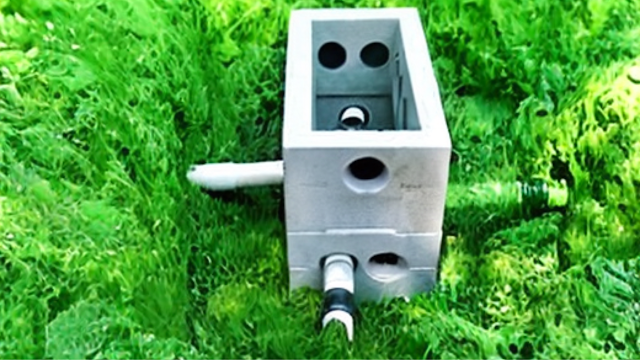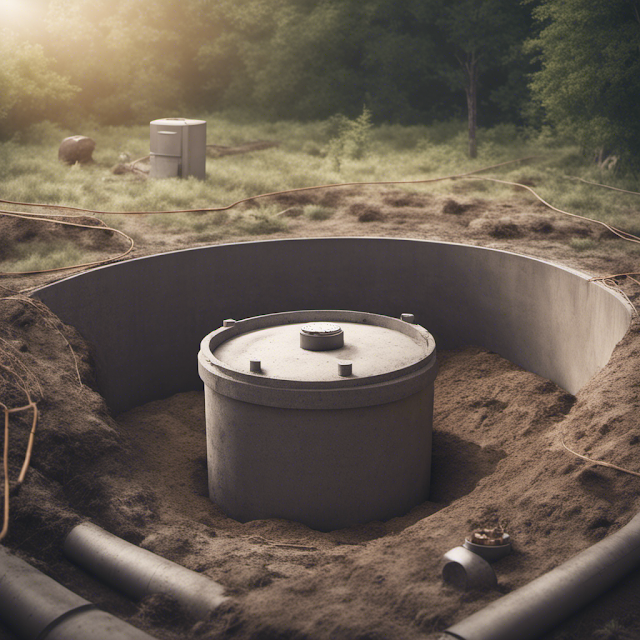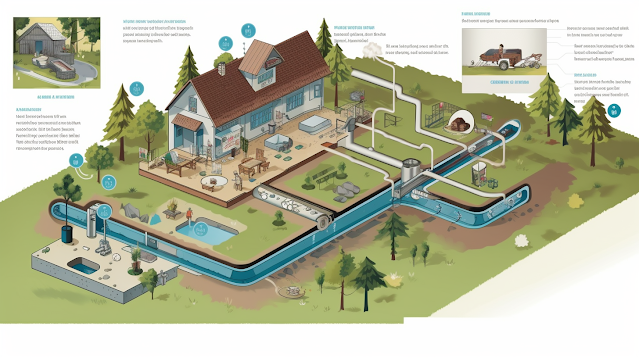Unlock The Secrets Of Effective Drainfield
 |
| Unlock The Secrets Of Effective Drainfield |
Are you experiencing drainage problems in your septic system? Understanding the secrets of an effective drainfield can help you maintain a healthy and efficient system.
Regular maintenance is crucial for ensuring the longevity and functionality of your drainfield, as neglecting it can lead to costly repairs and potential health hazards.
In this article, we will delve into the importance of regular maintenance for your drainfield. You will learn about the function of a drainfield, how it works within your septic system, and why it is vital to keep it in optimal condition.
Additionally, we will provide practical solutions for maintaining an effective drainfield, including tips on preventing common issues such as clogging and wastewater backup.
By unlocking these secrets, you will be equipped with the knowledge to care for your drainfield properly and avoid any potential problems down the line. Also, you need to know its ability to drain correctly so this is where the initial perc test should have shown this. Find out more here on this.
Importance of Regular Maintenance for Your Drainfield
Regular maintenance is crucial for the health and longevity of your drainfield, so don't neglect it! By following a drainfield maintenance checklist, you can ensure that your system operates efficiently and effectively.
This checklist typically includes tasks such as regular inspection, pumping, and cleaning. Inspecting the drainfield allows you to identify any potential issues or signs of damage early on, preventing costly repairs in the future. Pumping the septic tank removes accumulated solids and prevents them from clogging the drainfield.
Additionally, professional drainfield cleaning offers several benefits. Experts have the knowledge and equipment to thoroughly clean your drainfield, removing any buildup of sludge or debris that may hinder its functionality. This not only improves system performance but also extends its lifespan.
Regular maintenance is equally important for both new and existing drainfields. Neglecting this aspect could lead to various problems such as slow drainage, foul odors, or even complete failure of the system.
The benefits of professional drainfield cleaning cannot be overstated. These professionals are equipped with specialized tools and expertise to accurately diagnose any underlying issues within your drainfield system. They can then provide appropriate solutions tailored specifically to your needs, ensuring optimal functionality for years to come.
So make sure not to overlook regular maintenance and engage professionals periodically for thorough cleaning to unlock the secrets of an effective drainfield setup!
Understanding the Function of a Drainfield
To truly comprehend the inner workings of a drainfield, you must first grasp its fundamental purpose and how it operates.
A drainfield, also known as a leach field or absorption field, is a crucial component of any septic system. Its primary function is to efficiently treat and disperse wastewater that flows out of the septic tank. This vital process ensures that harmful pollutants and contaminants are filtered out before the water reenters the groundwater table or nearby surface water bodies.
Proper drainfield installation is key to ensuring its optimal performance and longevity. It involves careful planning and consideration of various factors such as soil composition, slope, and distance from water sources.
The drainfield consists of perforated pipes buried in trenches filled with gravel or other porous materials. These pipes distribute wastewater evenly across the drainfield area, allowing it to percolate through the soil gradually. By doing so, natural processes like biological filtration and soil adsorption further treat the effluent by removing harmful bacteria, viruses, nutrients, and other contaminants.
Regular drainfield maintenance is essential for prolonging its lifespan and preventing costly repairs or replacements. Proper care includes avoiding excessive water usage that can overload the system, not flushing non-biodegradable items down toilets or drains that could clog pipes or disrupt the flow of wastewater into the drainfield, and being mindful of what goes into your septic system.
Additionally, periodic inspections by professionals can help identify potential issues early on before they turn into major problems. Understanding how your drainfield functions and following best practices for maintenance will ensure its efficient operation for years to come while protecting both your property's value and the environment around it.
Practical Solutions for Maintaining an Effective Drainfield
For optimal drainfield performance, you'll want to implement practical solutions that keep your system running smoothly. Regular drainfield maintenance is essential to prevent issues such as clogging and overflow.
One important aspect of maintenance is monitoring the water usage in your home. Excessive water usage can overload the drainfield, leading to problems. By conserving water and using it efficiently, you can reduce the strain on your drainfield and ensure its longevity.
In addition to monitoring water usage, regular drainfield troubleshooting is necessary to identify any potential problems before they escalate. This involves inspecting your drainfield periodically for signs of clogs or leaks. If you notice slow drains or unpleasant odors coming from your drains, it could be an indication of a problem with your drainfield.
It's crucial to address these issues promptly by contacting a professional who specializes in septic systems. They will be able to diagnose the problem and provide appropriate solutions, such as cleaning the pipes or repairing any damaged components.
By staying proactive with drainfield maintenance and troubleshooting, you can avoid costly repairs and ensure that your system continues to function effectively for years to come.
Signs of Drainfield Issues and How to Address Them
If you notice a foul stench emanating from your drains or sluggish water flow, it's time to address potential drainfield issues before they worsen. Common drainfield problems can arise due to various reasons such as excessive water usage, clogged pipes, or soil compaction.
To effectively troubleshoot drainfield issues, here are three key steps you should take:
Conduct a thorough inspection: Start by visually inspecting the area around the drainfield for any signs of standing water or wet spots. This could indicate a failing system. Additionally, check for any sewage backups in your home or slow drains. These signs suggest that there might be an issue with the drainage system.
Determine the cause: Once you've identified potential problems, it's crucial to pinpoint their root causes. Excessive water usage can overload the drainfield and lead to failure. Consider reducing your water consumption and fixing any leaks in plumbing fixtures to alleviate strain on the system. If clogged pipes are causing issues, use enzyme-based cleaners or have a professional plumber clear out blockages.
Seek professional assistance: If you're unable to resolve the problem on your own or if the issue persists despite your efforts, it's essential to seek help from a qualified septic professional. They have specialized knowledge and equipment to diagnose and repair drainfield problems accurately.
By following these troubleshooting steps and addressing any common drainfield problems promptly, you can prevent further damage and ensure proper functioning of your septic system for years to come. Additionally, regular maintenance and inspections from a professional septic system service provider can help identify potential issues before they become major problems, saving you time, money, and the inconvenience of a malfunctioning drainfield.
 |
| Drainfield or leach field cross section |
Tips for Long-Term Drainfield Care and Prevention of Problems
Maintaining a healthy drainfield doesn't have to be complicated; all it takes is regular pumping and avoiding excessive water usage. When it comes to drainfield care, proper installation is key. Make sure that the drainfield is installed by a professional who follows the recommended guidelines. This includes ensuring that the soil conditions are suitable for drainage, properly sizing the drainfield based on household wastewater volume, and installing appropriate distribution lines and gravel beds.
In addition to proper installation, there are common mistakes in drainfield maintenance that should be avoided. One of these mistakes is overloading the system with excessive water usage. It's important to spread out water usage throughout the day and avoid doing multiple loads of laundry or running dishwashers back to back.
Another mistake is neglecting regular pumping. Pumping your septic tank every three to five years will help prevent solids from entering the drainfield and clogging the soil pores. Regular inspection of your drainfield can also help identify any issues early on before they become major problems.
By following these tips for long-term drainfield care and avoiding common maintenance mistakes, you can ensure that your drainfield remains efficient and problem-free for years to come.
Frequently Asked Questions
How much does regular maintenance for a drainfield typically cost?
Regular maintenance for a drainfield typically costs around $200 to $500. DIY maintenance may be cheaper, but professional maintenance ensures proper inspection, cleaning, and repairs, preventing costly issues in the long run.
Can I perform regular maintenance for my drainfield myself, or do I need to hire a professional?
To ensure optimal performance and longevity of your drainfield, it is recommended to hire a professional for maintenance. Drainfield maintenance experts possess the necessary knowledge, skills, and specialized equipment for thorough inspections and repairs. DIY approaches may lack expertise and could lead to costly mistakes.
What are some common causes of drainfield issues?
Common signs of drainfield issues include slow drainage, foul odors, and pooling water. To prevent drainfield problems, avoid overloading the system with excessive water usage or flushing non-biodegradable items down the toilet.
Are there any specific types of plants or landscaping that should be avoided near a drainfield?
Avoid planting trees or shrubs with deep root systems near a drainfield, as their roots can infiltrate and damage the system. Instead, opt for shallow-rooted plants like grass or ground cover to protect your drainfield from potential landscaping-related issues.
Can using certain household products or chemicals affect the effectiveness of a drainfield?
Using certain household products or chemicals can negatively impact the effectiveness of a drainfield. To maintain a healthy drainfield, avoid using bleach, solvents, and excessive amounts of cleaning agents. Instead, opt for environmentally-friendly alternatives and reduce water usage.
Conclusion
In conclusion, maintaining an effective drainfield is crucial for the overall functionality of your septic system. Regular maintenance and care are necessary to prevent potential issues and ensure the longevity of your drainfield. For good function, a soil percolation test, was a crucial step in the process of installing a septic system. So check if yours out.
By understanding the function of a drainfield and implementing practical solutions, such as proper waste disposal practices and regular inspections, you can effectively maintain your drainfield's effectiveness. It's important to be aware of the signs of drainfield issues, such as slow drainage or foul odors, and promptly address them to prevent further damage.
Additionally, long-term drainfield care involves practicing preventive measures, such as conserving water usage and avoiding excessive use of chemical cleaners or harsh detergents. These actions can help minimize the risk of clogs or damage to your drainfield.
Overall, by taking proactive steps in maintaining your drainfield, you can unlock the secrets to its effectiveness. Stay vigilant in monitoring its condition and seek professional assistance when needed. With proper care and attention, you can ensure that your drainfield continues to operate efficiently for years to come.
.png)





.png)




Comments
Post a Comment